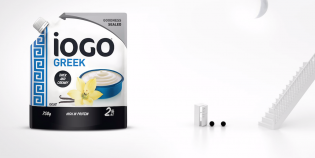Remember this phrase the next time you find yourself in conversation with your friendly neighbourhood PR practitioner: Ad Value Equivalency. Go ahead and say it, shaking your head as you do, as if pooh-poohing an unwanted politician who’s somehow found a way to get re-elected.
Then prepare for the deluge.
What you’ll likely hear is how AVEs simply need to be shown the door. They’ll say the long-held PR measurement process that equates the amount of editorial coverage a product, service or issue receives with what a marketer would have to spend in advertising dollars to reach the same audience is due for a big change. It’s antiquated, inaccurate, misleading and impossible to standardize.
And regardless of where you hear these criticisms, they’ll largely be the same. In the U.S., the Institute of Public Relations created a commission to look at PR measurement. Its discussion paper states the basic conceptual problem with AVEs: “Calling it ‘advertising equivalency’ strongly suggests that a news story of a particular size has an equal impact to an advertisement of the same size in that publication. At this time, the commission knows of no factual basis for this assumption.”
Closer to home, the Canadian Public Relations Society last year went through the pain of birthing a completely new system-Media Relations Ratings Points-that omits ad value equivalency because of its lack of substance. “Ad values are increasingly seen by the public relations industry as an outdated and ineffective tool that does not accurately measure the value of editorial coverage,” the CPRS measurement committee said at the launch. The MRP system has already been taken up by Canadian marketers including the Bank of Montreal, Coca-Cola, Johnson & Johnson and Visa Canada. In the meantime, AVEs continue to see their reputation swept into the PR gutter.
But among PR and media measurement folk, there are those who say AVEs are worth keeping around. “We know what’s wrong with the metric and how it’s been used in the past,” says Angela Jeffrey, vice-president of editorial research for New York-based Video Monitoring Services of America, one of the largest providers of media intelligence in the U.S. “But don’t throw the baby out with the bathwater. There’s value to the data itself-it just has to be used differently.”
Jeffrey, who is also a member of the IPR commission on PR measurement and evaluation, and who is in the process of completing a white paper on ad values, says the term needs to change, since there’s no impact equivalency between advertising and editorial. Her research has shown that compared to other metrics such as story counts and straight impressions, media values-a refined version of AVEs-register the highest correlations with business outcomes. “We’ve found that if you start with that (AVE) figure and refine it further by qualitative factors such as slant and prominence, you get a whale of an accurate metric when comparing media coverage to business outcomes,” she says.
Jeffrey, whose team helped compile more than 200 studies and 10 million media clips over the past five years, says media values can be up to12.5% more accurate than audience impressions. And compared to simple story counts, they can be 25% more accurate. AVEs, she concludes, are not ready for the dustbin.
Like Jeffrey, Andrew Laing, president of Toronto’s Cormex Research, a media content and measurement analysis firm, says AVEs are worth considering, but only in the proper light. “As a measurement criteria, (AVEs are) really awful,” he says. “But there are instances in which they can be useful, and it comes down to when you’re assessing equally comparable products or services, and you want to measure them in a way that assesses the relative market value (of media coverage) of one product over another.”
As an example, Laing cites companies like Bell and Rogers, which have competing high-speed Internet services. A proper use of AVEs in that case would be to measure the AVEs for each in a given period of time, and come up with a percentage, not a dollar figure. “You can say that within the last quarter, the relative market value of Bell’s (media coverage), for instance, has been twice that, or 20% greater than that of Rogers, and that’s an improvement over the previous quarter by X%. But what you’re not doing is saying, Bell’s coverage is worth a million bucks. It’s not an absolute, but a good indicator of relative value over time.”
Laing also points out that for many areas, AVEs simply do not have the capacity to deliver, such as their inability to measure instances where the marketer’s goal is zero publicity. Too many PR practitioners fall into the AVE trap because they want to put dollar figures on their ad values in an attempt to talk the C-Suite’s language. CEOs and CMOs who may not be familiar with PR measurement still understand AVEs for their dollar value, even though those values may only be half-baked and don’t paint a true picture of the media coverage’s impact.
Jeffrey says those C-suite executives should always ask follow-up questions, such as where and when editorial coverage ran. A five-second TV blip at 3 a.m. will likely not come close to the stated audience size, for example, while an inch of newspaper coverage may only be worth $100, not the $50,000 it would have cost to buy an ad the size of the entire story. “I think there are a lot of people out there who intuitively know there’s something valid about looking at objective, market-driven data,” she says.
AVEs have provided that in the past, so it isn’t necessary to start from scratch, just shift perspective. “It’s very important that we not lose this valuable database just because it’s not popular anymore,” she says. “We can’t afford to give our clients inferior data just because certain people out there don’t like it.”
|
Global calculations | ||
One year after the Canadian Public Relations Society released its Media Relations Ratings Points (MRP) system, the PR measurement tool is being increasingly used from coast to coast. And while many PR agencies outside of the country have heard of MRP, this made-in-Canada solution may end up being a just-in-Canada solution. An MRP-type system might one day become a best practice in Mexico, but not any time soon, says Antonio Tamayo, president of Hill & Knowlton in Mexico. The media landscape in Mexico is still very different from that of Canada, he says. For instance, in a country of 104 million, there is only a distribution of 2.5 million daily newspapers, and TV and magazine reach is limited. Radio plays a huge role in getting messages across to Mexicans, and the Internet is also playing a bigger role. But a system like MRP, says Tamayo, is far too expensive to work in Mexico and would be of limited value. Tamayo says perception studies will be the way PR is measured in Mexico for years to come. Renata Monte Alegre, general manager of Hill & Knowlton Brazil, says PR measurement is an issue in Brazil as well, but no system like MRP exists. H&K Brazil relies on monthly quantitative and qualitative clipping reports, which consider the media, the tone and whether the coverage was spontaneous, from the account team or a press release. Those findings are then compared with the original communications plan. But traditional ad value is still often used, she says. “Although we also feel that this tool is far from appropriate, some clients still ask us to provide an ad value report of all clippings gathered.” European PR shops are using MRP-like tools, but developing them on their own, says Laura Currie, who spent three years running Edelman’s Brussels office and is now senior VP of corporate and public affairs at Edelman Toronto. “Europeans are doing very much the same things. The parameters are very similar,” she says. It’s not as formal as the MRP, but it has the same basis. The big difference is that instead of being a standardized open system, each agency uses its own proprietary tools. She doubts there will ever be a standardized European system, a sentiment echoed by Richard Ingles, managing director of MB Precis, a London, U.K.-based media content analyst. “Each agency has their own customer bases, their own methodology,” he says. “Where is the incentive to give them up? Your objective is revenue.” An agency’s methodology is its key edge over competitors, he argues. A standardized system would trump that, although Ingles does say it would allow for better benchmark comparisons and more objective reports. Meanwhile a multinational system is highly unlikely in Asia, says Glenn Schloss, Hill & Knowlton’s Hong Kong director of corporate communications. Much of the continent is made up of developing markets and PR budgets are limited, he says. There isn’t yet the same level of sophistication for PR programs, let alone measurement. Clients in Asia are cost conscious and want value from every activity, he adds. “There is often a focus on short-term or even instant results.” Language also complicates measurement, since unlike in Europe or the Americas, which at least have a common alphabet, Asian PR measurement has to contend with entirely different script systems from one country to the next. And while H&K tries to dissuade the practice, Schloss says many clients still ask for AVEs.-Eric Ahlberg | ||
|
Q&A | ||
|
Mark Weiner, president of Norwalk, Connecticut-based PR firm Delahaye and author of Unleashing the Power of PR, spoke to Marketing senior writer Paul-Mark Rendon about why he’s an ad value equivalency moderate, as well as why it’s right to put a dollar value on PR ROI | ||
What are advertising values’ redeeming qualities? What’s the biggest reason ad values don’t work? So the proper way to use ad value is to first figure out media costs? Some say that applying the term ROI to PR is a misnomer because there isn’t any revenue generated. But can you measure that? | ||










